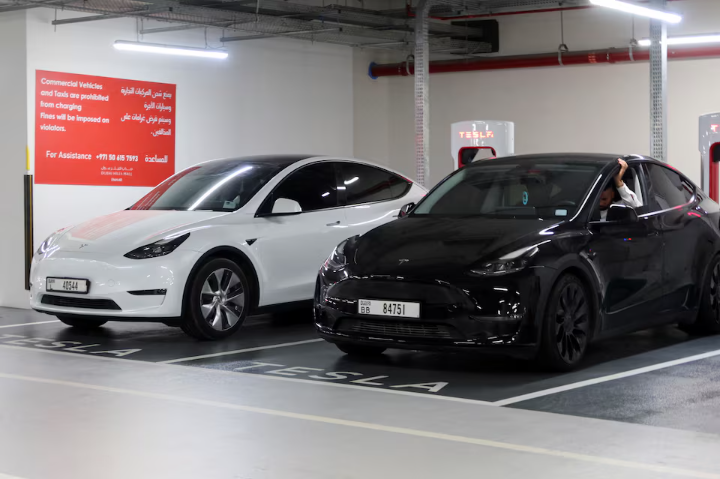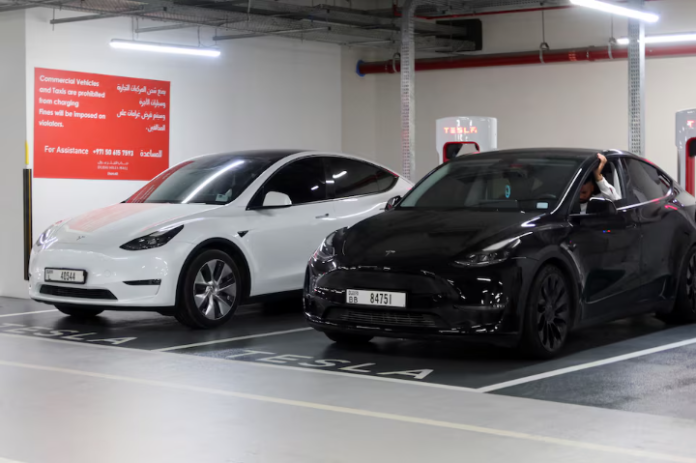Tesla is officially rolling into Saudi Arabia, but the road ahead might be as challenging as the scorching desert itself. On Thursday, the American EV giant begins selling its vehicles in the kingdom—a major step into a market that could prove both lucrative and demanding.
While Saudi Arabia boasts grand ambitions to become a global hub for electric vehicles (EVs), the reality on the ground tells a different story. Along the kingdom’s 900-kilometer stretch from Riyadh to Mecca, there isn’t a single charging station. This makes long-distance travel for EV owners nearly impossible without strategic planning—or serious patience.
Despite the odds, Tesla seems ready to test the waters. Last year, Saudi Arabia recorded just 2,000 EV sales—far less than what Tesla sells globally in a single day. But there’s a catch: the kingdom is investing a staggering $39 billion under its Vision 2030 initiative to diversify away from oil. That includes a push to increase EV adoption to 30% by the end of the decade.
Tesla’s entry into Saudi Arabia follows years of frosty relations between CEO Elon Musk and the Saudi Public Investment Fund (PIF). Back in 2018, Musk claimed he had “funding secured” to take Tesla private, referencing talks with the PIF. When the deal didn’t materialize, investors sued, and leaked messages revealed tension between Musk and PIF boss Yasir al-Rumayyan. Since then, Tesla has been largely absent from Saudi EV plans.
However, the political climate has shifted. Musk now holds a prominent role in Donald Trump’s re-election campaign and potentially in his future administration. Trump himself is expected to visit Saudi Arabia soon, and experts suggest that Tesla is trying to solidify its presence ahead of that visit to ride the momentum.
But Tesla faces stiff competition. Chinese rival BYD opened its Riyadh showroom back in May 2024 and is already outselling Tesla—mostly through hybrid vehicles better suited to Saudi driving habits and charging limitations.

Add to that the extreme heat (which can hit 50°C/122°F) that drains battery life, and it’s clear Tesla is facing a uniquely tough market. Saudi Arabia currently has only 101 public EV charging stations, compared to 261 in the much smaller UAE. Most of these are concentrated in cities, making road trips across the kingdom’s vast deserts a tough ask for EV drivers.
Despite these hurdles, Saudi Arabia has formed the Electric Vehicle Infrastructure Company to ramp up the number of charging stations to 5,000 by 2030. With this expansion, and the introduction of more affordable, long-range EVs, experts believe Tesla could gain traction.
As Saudi drivers grow more environmentally conscious and the infrastructure improves, the future may look brighter for Tesla in the Middle East. But for now, it’s a calculated gamble in a land of opportunity—and obstacles.



